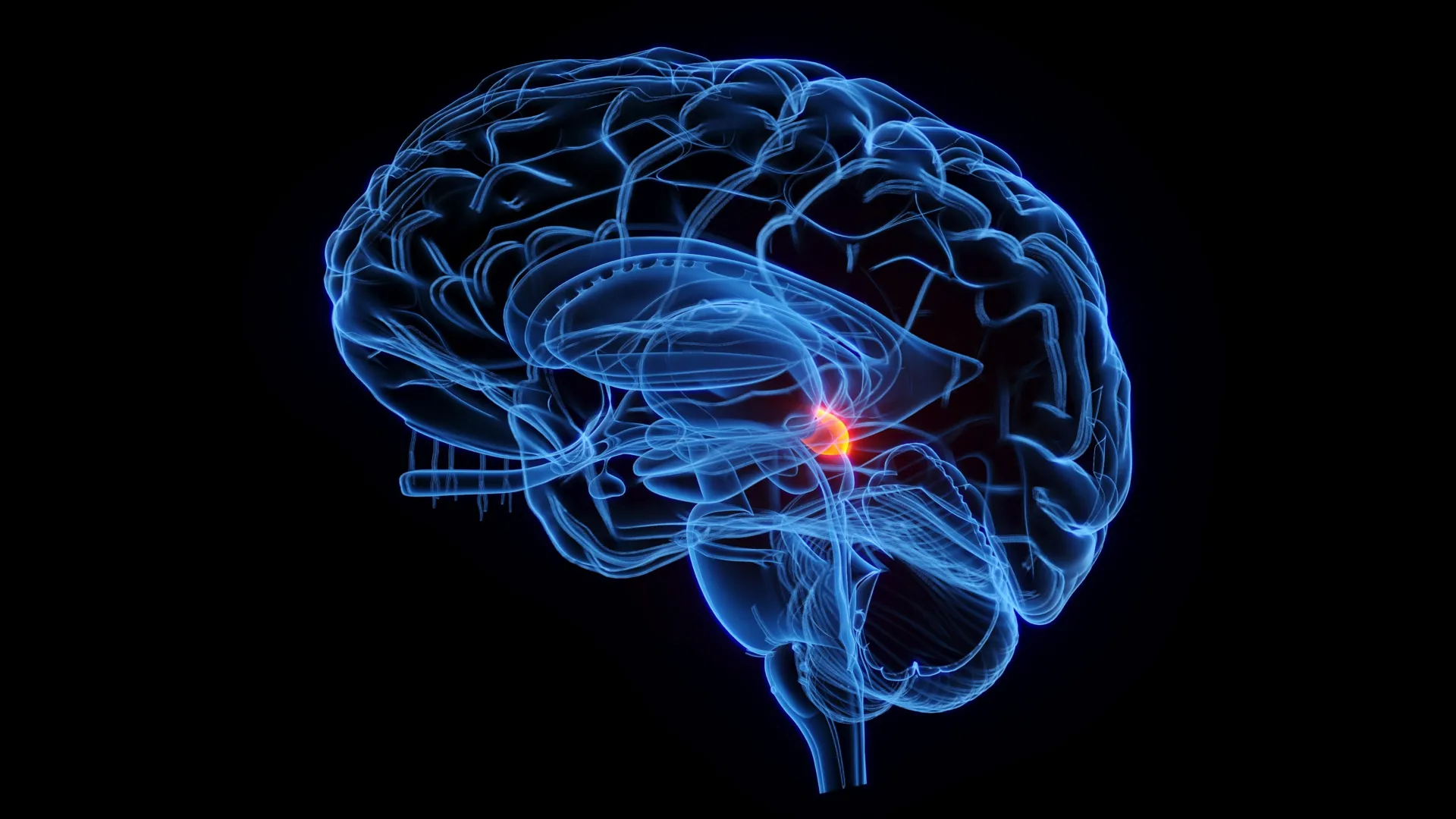The brain’s ability to interpret the visual world does not depend solely on its advanced outer layer, the cortex. A new study in PLOS Biology reveals that an evolutionarily older brain region, the superior colliculus, contains neural networks capable of carrying out fundamental visual computations. These circuits enable the brain to separate objects from their backgrounds and identify which visual cues are most relevant in space.
Researchers found that this ancient system, shared across all vertebrates, can independently produce center-surround interactions — a core visual process that helps detect edges, contrast, and attention-grabbing details in the environment.
“For decades it was thought that these computations were exclusive to the visual cortex, but we have shown that the superior colliculus, a much older structure in evolutionary terms, can also perform them autonomously,” explains Andreas Kardamakis, head of the Neural Circuits in Vision for Action Laboratory at the Institute for Neurosciences (IN), a joint center of the Spanish National Research Council (CSIC) and the Miguel Hernández University (UMH) of Elche. “This means that the ability to analyze what we see and decide what deserves our attention is not a recent invention of the human brain, but a mechanism that appeared more than half a billion years ago.”
The Brain’s Ancient “Radar” for What Matters
The superior colliculus works like a built-in radar, taking direct signals from the retina before the cortex receives them. It helps determine which parts of the visual scene are most important. When something moves, flashes, or suddenly enters view, this structure reacts first, guiding the eyes toward the new stimulus.
To explore how this process unfolds, the team combined advanced tools such as patterned optogenetics, electrophysiology, and computational modeling. By using light to activate specific retinal pathways and recording responses in mouse brain slices, they discovered that the superior colliculus can suppress a central visual signal when the surrounding area becomes active — a defining feature of center-surround processing. This effect was supported by cell-type-specific mapping and large-scale computer simulations.
“We have seen that the superior colliculus not only transmits visual information but also processes and filters it actively, reducing the response to uniform stimuli and enhancing contrasts,” says Kuisong Song, co-first author of the paper. “This demonstrates that the ability to select or prioritize visual information is embedded in the oldest subcortical circuits of the brain.” These results indicate that the mechanisms directing attention are deeply rooted in ancient brain architecture, long before the evolution of higher cortical areas.
Evolutionary Roots and Cognitive Significance
The findings challenge the traditional belief that complex visual processing happens only in the cortex. Instead, they support a hierarchical model in which ancient brain structures handle essential computations crucial for survival, such as detecting threats, following movement, or avoiding obstacles.
“Understanding how these ancestral structures contribute to visual attention also helps us understand what happens when these mechanisms fail,” Kardamakis notes. “Disorders such as attention deficit, sensory hypersensitivity, or some forms of traumatic brain injury may partly originate from imbalances between cortical communication and these fundamental circuits.”
The research team is now extending their work to live animal models to study how the superior colliculus shapes attention and controls distraction during goal-directed behavior. By understanding how visual distractions translate into actions, scientists hope to uncover the neurological basis of attention and its dysfunction in modern life, where visual overload is common.
An International Collaboration
This research represents a large-scale collaboration between the Karolinska Institutet, KTH Royal Institute of Technology (Sweden), and the Massachusetts Institute of Technology (MIT, USA). It also involved Teresa Femenía, a researcher at IN CSIC-UMH, who played a key role in developing the experimental work.
Building on these discoveries, Andreas Kardamakis and Giovanni Usseglio contributed a chapter to the new Evolution of Nervous Systems series (Elsevier, 2025), edited by JH Kass. Their work broadens the evolutionary perspective, comparing subcortical visual systems across species. They show that structures analogous to the superior colliculus — found in fish, amphibians, reptiles, birds, and mammals — share a common purpose: merging sensory and motor information to guide gaze and attention.
This ancient brain organization, conserved for over 500 million years, became the foundation upon which the cortex later evolved its higher cognitive functions. “Evolution did not replace these ancient systems; it built upon them,” Kardamakis explains. “We still rely on the same basic hardware to decide where to look and what to ignore.”
This work was supported by Spain’s State Research Agency (Spanish Ministry of Science, Innovation and Universities), the Severo Ochoa Programme for Centres of Excellence, the Generalitat Valenciana through the CIDEGENT program, the Swedish Research Council, the Swedish Brain Foundation, and the Olle Engkvist Foundation.
Source link
